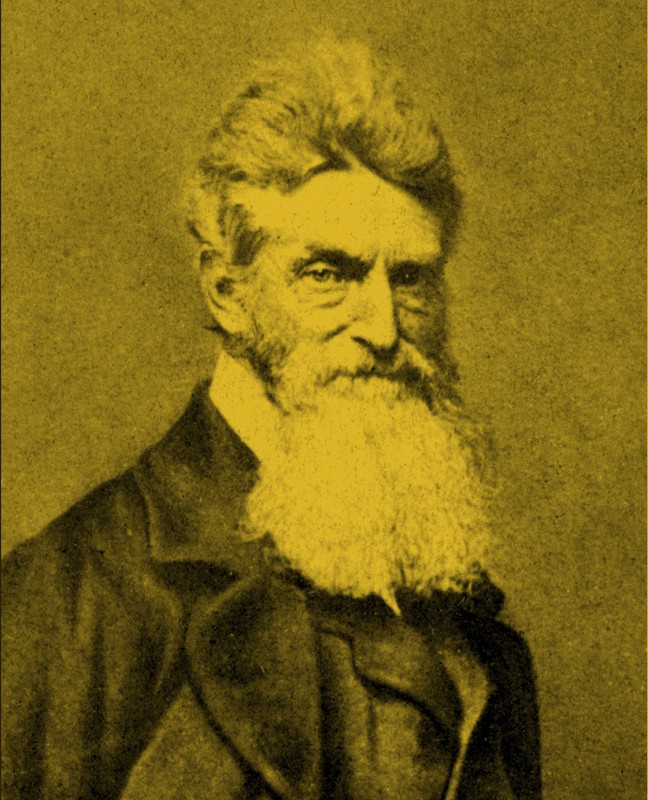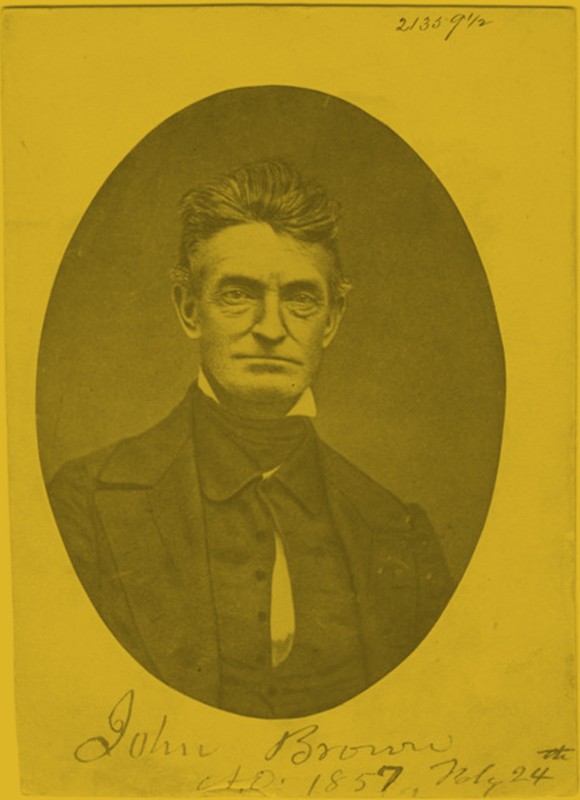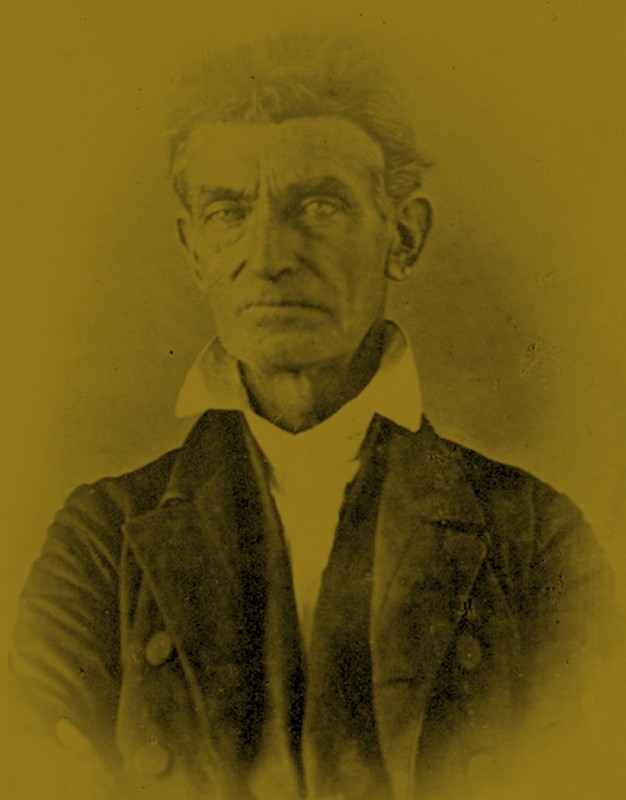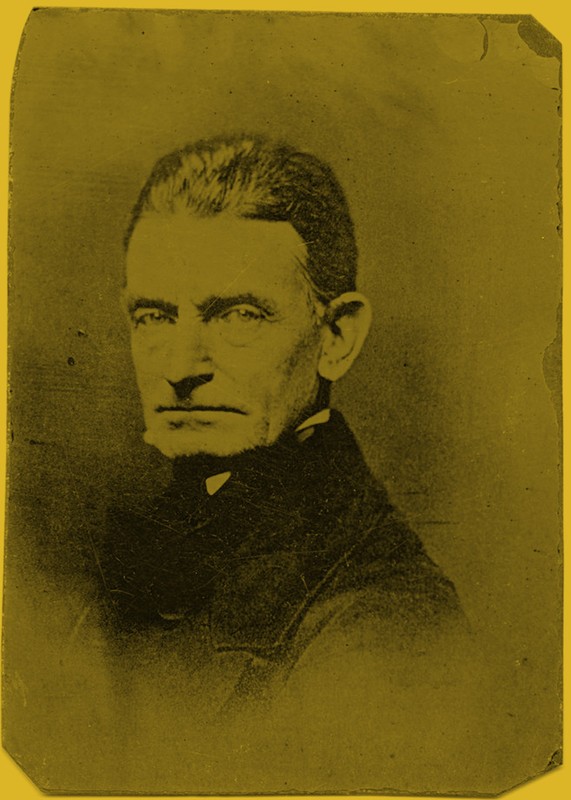John Brown
Introduction
Text-to-speech Audio
Abolitionist leader and minister John Brown was father to 20 children and an avid soldier. Leading battles in Kansas in the war against slavery, Brown gathered quite the following. Harriet Tubman referred to Brown as the 'greatest white man to have lived.' Brown vowed to die fighting to end slavery, a promise that was kept following the failed insurrection at Harpers Ferry after which he was charged with treason and then hanged. Students of Western University in 1911 successfully campaigned and funded the commissioning of an Italian sculptor to erect a marble statue of John Brown on this site. While Western University closed in 1948, the statue still stands today.
Images
John Brown

John Brown

John Brown

John Brown

Backstory and Context
Text-to-speech Audio
In Connecticut in 1800, John Brown was born, as the middle of eight children. Only a few years after his birth, the family moved to Ohio where John attended much of his schooling. In 1816, Brown headed back to Connecticut to attend a prep school with the hopes of becoming a minister, and it was here that he met his wife. Once married in 1820, Brown and his wife Dianthe moved to Pennsylvania to start their family, which grew to seven children. The couple lived a happy life as farmers with John operating a business up until her death in 1832. Only a year later, he remarried Mary Ann and she and John had thirteen more children. The family moved out to Ohio four years later, where Brown expanded his tannery business and started to build a reputation in wool, and it was his time here that exposed John to the abolitionist cause in which he swiftly worked to support. Upon the death of a dear abolitionist friend, Brown and his family migrated to Massachusetts in 1846 to partake in the growing abolitionist movement. It was here where Brown began to establish a following and his sons were also readily involved in the abolitionist cause.
John Brown had many roles throughout his lifetime—he was a strong abolitionist leader, father of 20 children, and a very tough fighter. Brown arrived in Kansas via wagon with his eldest sons on a mission to take action for the abolitionist cause. On their voyage, they collected rifles from their stops in Ohio and Illinois in an effort to arm themselves for their mission to defeat ‘satan’s legions.’ These legions were primarily the proslavery militias that came out of the 1850 Fugitive Slave Act which required all citizens to aid in the capture of fugitive slaves. Upon their arrival in Kansas, Brown led many battles alongside his sons, including the Pottawatomie Massacre which resulted in the death of five slavery supporters in an act of retaliation. Although Brown denied his involvement in the massacre, he supported the effort nonetheless and there was a retaliation at play between the proslavery men that had died in efforts to inflict revenge on Brown and his supporters. This fight was only furthered by the creation of a proslavery militia that took over Kansas, a free state, in an effort to capture those seeking freedom and try to reverse the free state status. In 1856, one of Brown’s sons was killed in the fight against slavery, which only fueled him further on his cause and led John to lead raids and free slaves throughout the Kansas area in 1858. During this time, Brown became notoriously violent, garnering Kansas the nickname ‘Bloody Kansas’.
Brown most famously stated, “I only have a short time to live–only one death to die, and I will die fighting for this cause”. He then continued on his journey northward, in an effort to gain financial support for his war against slavery that was to eventually invade the south. In this endeavor, Brown secured a meeting with Harriet Tubman to discuss his plans and garner her support. Tubman was a vital contact for Brown as she had connections to many wealthy abolitionists who would be willing to purchase arsenal and supplies in addition to aiding in the recruitment of foot soldiers for the war.. Luckily for Brown, Harriet Tubman was enchanted by him, as she considered him to be the ‘greatest white man to have ever lived’ which helped him to secure the financing for his southern invasion. Support from Tubman helped others garner more trust for Brown as he continued to recruit and fight for the abolitionist cause.
The ‘Secret Six’ invested in Brown's cause and he then returned to Kansas to prepare. That December, Brown led a group of twelve fugitive slaves on an 82-day journey of over 1,500 miles in an effort to defeat a force of US troops. This ultimately led to Brown's death following the raid on Harpers Ferry in Virginia in 1859 as well as the death of two more of his sons. The attack resulted in four deaths on the proslavery side, the death of ten abolitionists, with five of Browns’ men escaping and seven having been captured. After the failed insurrection attempt, Brown was charged with treason and then hanged. Although this solidified Brown’s legacy as a martyr for the cause, this raid was a driving force in escalating tensions prior to the Civil War.
Sources
Bordewich, Fergus M. . John Brown’s Day of Reckoning, Smithsonian Magazine. October 1st 2009. Accessed April 5th 2022. https://www.smithsonianmag.com/history/john-browns-day-of-reckoning-139165084/.
Britannica, T. Editors of Encyclopaedia (2021, November 28). John Brown. Encyclopedia Britannica. https://www.britannica.com/biography/John-Brown-American-abolitionist
Finkelman, Paul. A Look Back at John Brown, https://www.archives.gov/publications/prologue/2011/spring/brown.html. April 1st 2011. Accessed April 5th 2022. https://www.archives.gov/publications/prologue/2011/spring/brown.html.
Kansas Historical Society. John Brown, Kansapedia. December 1st 1969. https://www.kshs.org/kansapedia/john-brown/11731.
Oldest Statue of John Brown, Road Side America. https://www.roadsideamerica.com/story/24044.
https://kansaspublicradio.org/kpr-news/remembering-iconic-kansas-abolitionist-john-brown-martyr-or-madman
https://www.smithsonianmag.com/history/john-browns-day-of-reckoning-139165084/
